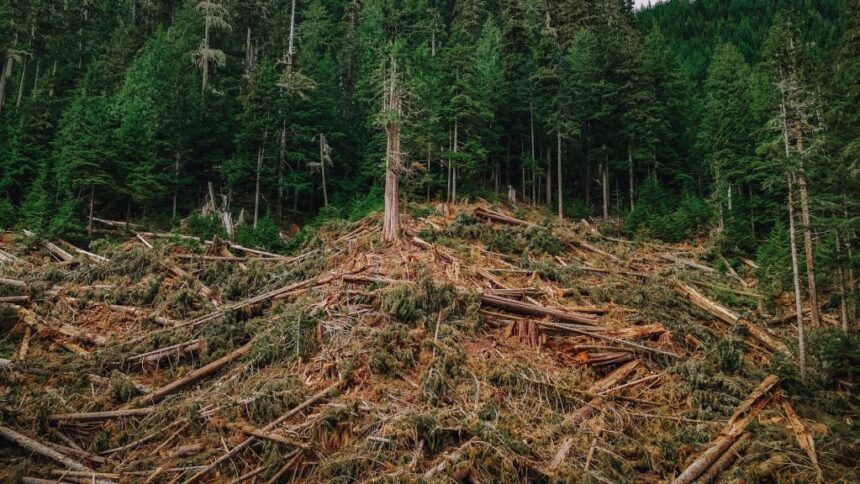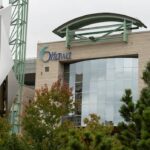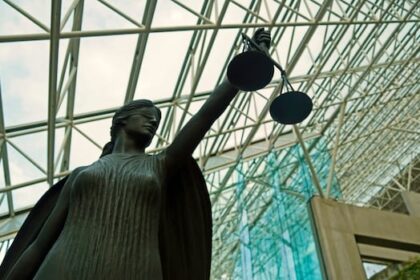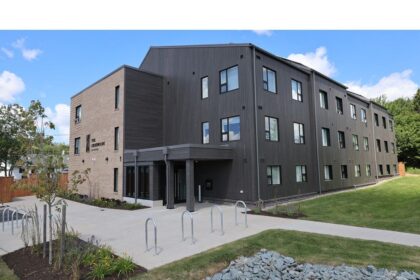B.C.’s NDP government has recently lent a steadying hand to its beleaguered forestry sector, pausing stumpage fees, expediting permits and investing in mills to prevent its looming fall — but some say to no avail. “Why does it keep getting worse?” Prince George-Mackenzie Conservative MLA Kiel Giddens asked during the spring legislative session, voicing a question that continues to echo months later. A new report commissioned by the Sierra Club BC points to a theory: B.C.’s supply of unlogged, high-value trees that industry has long relied on is dwindling, rendering short-term fixes and freebies inadequate. As report co-author and forester Dave Daust puts it, “If you have a car with a broken engine, fixing the flat tire is not going to fix the problem.” Pressure on B.C.’s most at-risk forests appears to be intensifying. The report says the province’s efforts to temporarily pause logging in rare forests through old-growth deferrals have failed. Instead, B.C. forests were four times more likely to be logged inside recommended deferral zones than outside over the past four years. With industry pressure exacerbated by escalating wildfires, the report suggests B.C.’s century-long feast on big, old trees is approaching its end. The question is how many of them will be left. A report commissioned by the Sierra Club of BC provides data on the state of B.C. forests. The findings indicate primary forest, which is forest that has never been logged, are shrinking. Map: Supplied by Sierra Club BC Since being elected in 2017, the BC NDP has taken a Janus-faced approach to forest management. In 2020, it committed to a “paradigm shift” that would transform its forest management system from one that prioritizes logging fast and furious to logging only what ecosystems can handle. More recently, they’ve seemingly cooled on such commitments; at the beginning of the year, Premier David Eby instructed his forest minister to aim to raise logging levels by roughly 50 per cent compared to 2024. “The failure to fully deliver on old growth commitments is a profound betrayal of trust in First Nations, the public and future generations,” Grand Chief Stewart Phillip, president of the Union of British Columbia Indian Chiefs, said in a statement. “As the climate crisis deepens, allowing these irreplaceable forests to be logged is reckless and short-sighted.” ‘The deferrals failed’ In 2021, Daust and co-author Karen Price, an ecologist, were among a five-person panel that mapped and recommended 2.6 million hectares of at-risk old growth forests be deferred — a temporary status that would keep them from getting cut down as longer-term land use planning decisions took place. “It was intensely disappointing to see how badly they failed,” Price says. Their report found that in four years, around 113,000 football fields worth of old-growth deferral zones were logged. Wildfires deepened the loss further, burning almost the forest equivalent of 206,000 football fields. Drawing on the province’s forest inventories and GIS mapping software, the report identified the highest deferral logging rates in the dry interior regions and in sub-boreal forests in the province’s central interior. B.C.’s old growth forests are unique, rare and non-renewable, according to two foresters who were commissioned to write an old-growth strategic review for the provincial government. The foresters recommended immediate logging deferrals in old-growth forests at the highest risk of biodiversity loss. Photo: Taylor Roades / The Narwhal The trees were able to be logged because the province made deferrals optional, pending approval from First Nations. But groups like the BC Assembly of First Nations and the Union of British Columbia Indian Chiefs described the province’s approach as a “hot potato,” passing difficult decisions to First Nations without involving them in the decision-making process or providing adequate transition funding to support potential revenue shortfalls. Price says B.C.’s approach to deferrals and the still-nascent change they were meant to precipitate are telling. “This analysis confirms what we suspected,” she says. “The paradigm hasn’t shifted.” The problem with planted forests in B.C. Core to the forest industry’s long-term conundrum is that, so far, it isn’t logging the vast blanket of planted forests it has created. For one thing, these forests are young, with around 80 per cent less than 40 years old, according to the Ministry of Forests, meaning the majority of the province’s logging happens in unlogged forests. But even when they mature, they may prove to be shoddy stand-ins for the forest they replaced. Price describes planted forests as towns with only “one type of people with one type of skill.” Lacking the forest equivalent of doctors, teachers, artists and farmers, their lack of genetic and structural diversity succumbs more easily to disease and disturbances like fire and adds fewer nutrients to the soil. They tend to grow smaller, weaker trees. It’s a bad situation for industry and for ecosystems. B.C. has never analyzed how much unlogged forest — also known as “primary” forest — it has left. Instead, it divvies up its forests into two main categories: old-growth trees that are beyond 140-250 years, depending on their location, and everything else. In other words, the forests B.C. categorizes as “old growth” are generally considered “primary,” but “everything else” includes primary and planted forests. Price says there are reasons to pay attention to that broader category of primary forest and how much remains. For one thing, that’s because unlogged forests in B.C.’s classification system lose “old growth” status when they’re burned in a wildfire or beset with pest infestation like the pine beetle, events that set back their official age clock as if they were just clear cut. But the likeness stops there, says Price. “Naturally disturbed forests still have functionality that plantations do not,” she says. In July and August 2024, 20,000 hectares of B.C. forest burned in the Argenta Creek Wildfire. Wildfires and other disturbances such as pest infestations cause forests to lose their old growth status in the eyes of the province, even if they have never been logged. Photo: Louis Bockner / The Narwhal In a changing climate, those wildfires and pest infestations are growing more frequent — almost four per cent of the province’s remaining old growth burned in the last four years, according to Price and Daust’s analysis. In the last decade, fires across the province burned seven times more than historic average. Meanwhile, companies are ramping up wildfire salvage logging in burned forests. Companies also target primary forests when logging for biopellet producers like Drax, which export wood pellets to places like the U.K. and Japan, where they’re burned for electricity. All told, Price says pressure on non-old-growth, primary forests is increasing. How much of B.C.’s old-growth forests are left? For the first time, Daust and Price provide data on the kinds of primary forests that remain. Their findings indicate a shrinking map of primary forest, particularly in easier-to-log areas and in the bigger-treed stands. They found a third of B.C.’s forests have been degraded by planting or deforested to make clearings for things like private land, pipelines and roads. The remaining two-thirds is primary forest, but much of that is located in the province’s northern regions, where trees tend to be smaller and difficult to access. They also found large tracts of primary forests, including those with bigger trees, in limited protected areas and in small patches next to degraded forests. That patchy picture is an ecological problem, Daust says, because each ecosystem type requires a certain threshold of intact, unlogged forest to thrive. When those thresholds are crossed, generally considered to be anything less than 30 per cent of what was there originally, ecosystem collapse begins to loom. “The continued decline of primary forest indicates our inability to have an industry that is sustainable on a set footprint,” Peter Wood, a lecturer and coordinator in international forestry at the University of British Columbia says. “We’ve always been able to go a little further” Besides the ecological consequences of exhausting primary forests, Wood says Price and Daust’s report has a stark message for industry too: “There’s actually very little left in terms of the really economically viable primary forest.” Wood laments what he sees as an information “vacuum” obscuring the supply challenges behind the industry’s growing crash. “Why are we only getting this from an NGO report?” he says, noting announcements like this week’s mill closure in 100 Mile House shouldn’t come as a surprise. “This is stuff that I would hope government should be not only aware of, but should be communicating to the public.” Price and Daust hope the industry’s current crisis moment accompanies a turning point, aligning it with the kinds of forestry ecosystems can sustain, and including efforts to restore the province’s vast and struggling planted forests, and to protect 30 per cent of the province’s ecosystems by 2030. But, despite its purported commitments to paradigm change, Price says B.C.’s forest management continues to harbour major blind spots about ecosystems and what they need to thrive. “If you have an ecosystem perspective, all these things fall into place nicely,” she says. “The government doesn’t have that.” Recent Posts B.C.’s century-long feast on big, old trees has sent forests into freefall Nov. 12, 2025 7 min. read A close look at the province’s old-growth data reveals a gap between political promises and… The day pipeline security followed me — and what I learned later about Canada’s spy agency By Matt Simmons (Local Journalism Initiative Reporter) Nov. 12, 2025 8 min. read As the federal government designates resource extraction projects in the ‘national interest,’ the companies building… Who’s afraid of the big, bad coywolf? Nov. 10, 2025 13 min. read Reports of a larger, more aggressive coyote wandering Toronto streets understandably draw attention, but behind…
B.C.’s century-long feast on big, old trees has sent forests into freefall











